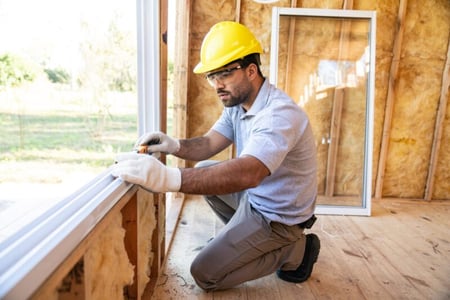
When you’re looking for accessible ways to save money, insulating a home against heat loss may not be your first thought, but it might just be the most impactful. Old insulation and air leaks may seem trivial, but even minor gaps can significantly increase your energy expenses. Find out the most common causes of heat loss throughout your home and how to address inefficiencies with insulation, air sealing, and straightforward action.
What Causes Heat Loss?
Heat loss is the transfer of treated air from indoors to the outside. Heat in a home is typically transferred in one of three ways: conduction, convection, and radiation. The fourth type of heat loss is evaporation, but this type does not affect homes as significantly as the other three.
Conduction
Conduction describes heat transfer through solid materials. Heated air warms your walls all the way through, ultimately transferring outdoors. The outdoor temperatures have a similar impact; they cool the exterior wall, which in turn cools the indoor wall surface.
Heat loss via conduction typically occurs through:
- Ceilings
- Doors
- Floors
- Roofs
- Walls
- Windows
Convection
Convection is the transfer of heat through liquids or gases. Warm, less dense air rises, and cooler, denser air sinks. This process drives air leaks; warm air rises through gaps and openings in the building, while cold air settles to fill the space left by the escaped warm air.
Heat loss via convection occurs in:
- Cracks in walls, ceilings, and floors
- Gaps around windows and doors
- Openings near vents, plumbing, and electrical components
- Fireplaces and chimneys
- Attic hatches
- Unsealed basements and crawl spaces
Radiation
Heat also transfers through electromagnetic waves. Without delving into 100-level physics, radiation is essentially radiant heat, primarily caused by direct sunlight exposure. Radiant heat doesn’t need a medium like air or water to transfer through. One major source of heat loss through radiation is your roof radiating heat into your attic. On hot summer days, radiant heat can substantially increase indoor temperatures. In winter, this scenario flips; treated, warm air radiates through the ceiling and out of the roof, resulting in heat loss.
Other sources of radiant heat loss include:
- Ceilings
- Windows
- Walls
- Floors
Read more: Why Smart Homeowners Invest In Energy-Efficient Insulation
How to Prevent Heat Loss in a House
Preventing heat loss in homes involves identifying and mitigating these sources of heat transfer in key areas. While you may be able to address some issues yourself, such as sealing gaps around doors, a more comprehensive approach will yield better results and lower energy bills.
1. Get Help Detecting Heat Loss in Your Home
Start by contacting a home energy efficiency expert, such as your local Koala Insulation team. They will assess your home and recommend the most cost-effective solutions to improve the building envelope. A home heat loss inspection, also known as an energy assessment, is the first step to significantly reducing your energy bills.
2. Tackle Air Leaks First
Air leaks account for 20-40% of the total amount of energy used to heat or cool your home. Americans spend an average of $2,000 annually on heating and cooling, which means roughly $400 to $800 is wasted! Air sealing can substantially reduce heat loss, saving you money and keeping your home more comfortable.
3. Add or Replace Insulation
Insulation is the thermal barrier that prevents conductive heat transfer through exterior walls, floors, ceilings, and roofs. Adding or replacing insulation in these key areas of the home will address the negative effects of uninsulated gaps or old, potentially damaged insulation.
4. Assess Windows and Doors
Old, single-pane windows and uninsulated doors are significant causes of heat loss. Upgrading these components can offer immediate savings; the right windows can provide up to 13% energy savings, but the results vary widely depending on the materials, size, features, and the quality of installation.
Spend less to enjoy the benefits of reducing heat loss in your home! Koala Insulation will help you identify and apply for local, state, and federal energy efficiency incentives. If you’re eligible, you can save thousands on your project, shortening your payback period by months or even years.
Prevent Heat Loss with Koala Insulation
Let our experienced team identify ways to reduce heat loss in your home and connect you with tax credits and rebates to lower your project costs. You can always count on us for friendly, professional service and the highest quality materials. Take the first step toward reducing energy costs today; contact your local Koala Insulation to get started!
Find Your Location


Get a quote






